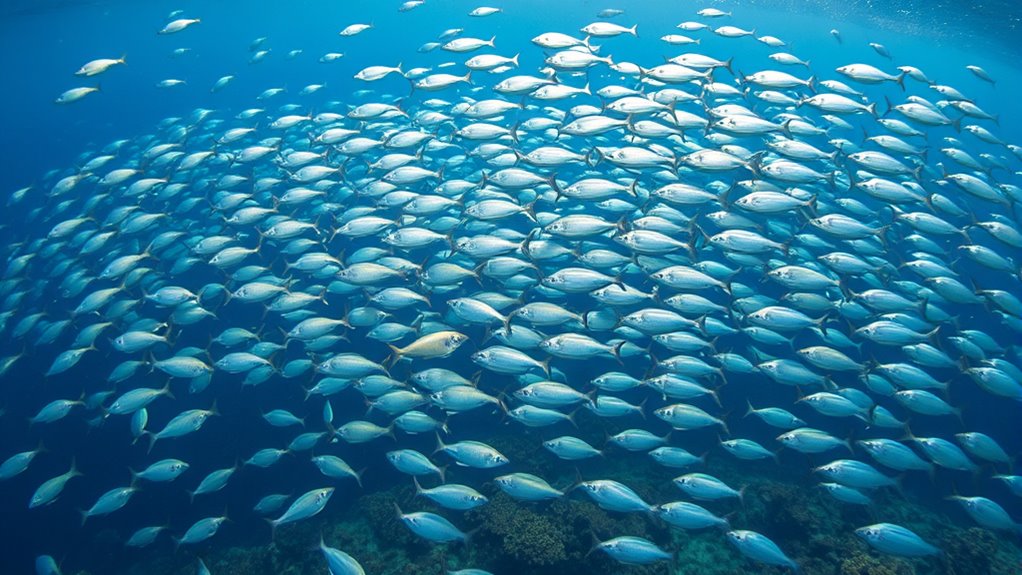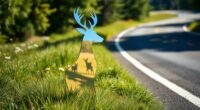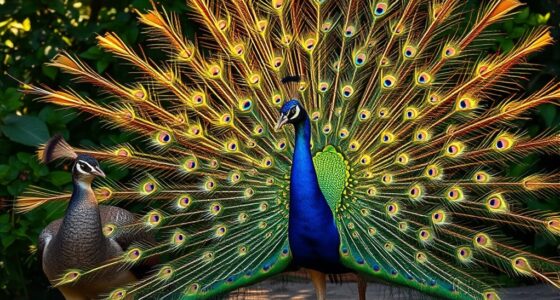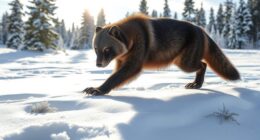Flocking and schooling are essential survival strategies for many animals. When birds fly in formations, like the V-shape, they conserve energy and navigate more efficiently. Fish in schools quickly react to predators, using synchronized movements to confuse threats and enhance safety. These group behaviors show not just instinct but also a remarkable level of cooperation. If you explore further, you’ll uncover even more fascinating aspects of how animals work together in their environments.
Key Takeaways
- Flocking and schooling enhance survival by improving predator detection and minimizing individual risk through collective alert systems.
- Birds and fish utilize group dynamics for migration, conserving energy and improving navigation through formations like the V-shape.
- Synchronized movements in schools of fish confuse predators, making it harder for them to target individuals.
- Collective behaviors in animal groups are instinctual, allowing rapid responses to environmental cues without conscious strategizing.
- Social structures in animal groups, such as large herds, provide protection and access to resources, underscoring their ecological significance.
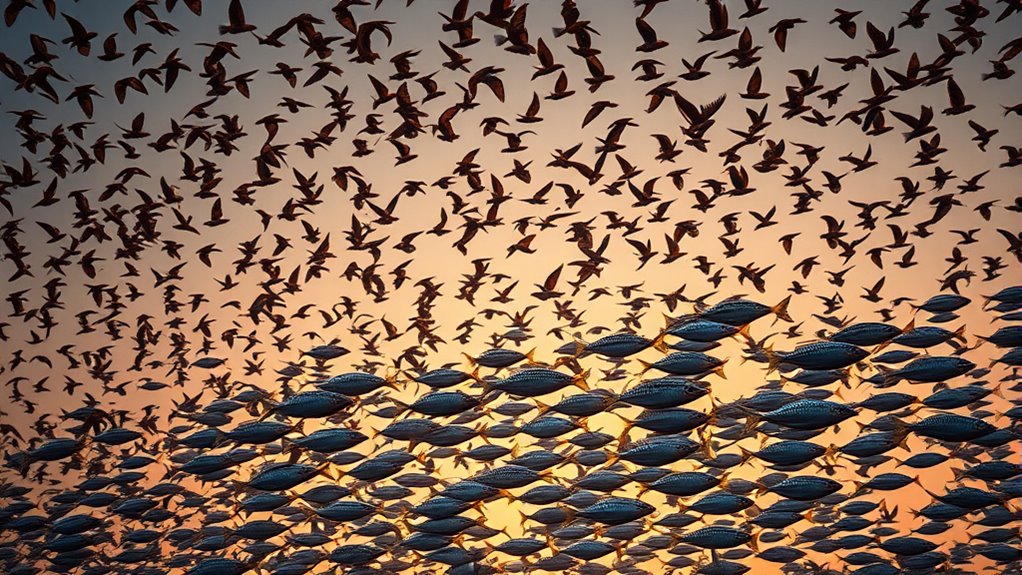
When you observe animals in groups, you might notice fascinating behaviors that reveal their social dynamics and survival strategies. Take, for example, flocks of birds or schools of fish. These gatherings are not just random; they serve critical purposes. One of the most striking aspects of group behavior is how it aids in migration patterns. Many bird species travel thousands of miles, relying on one another for guidance and support. By flying together in formations, they conserve energy and navigate more efficiently. You can see this when they create a V-shape in the sky, allowing the birds behind to take advantage of the updraft created by the ones in front. This teamwork is essential for long journeys and showcases the intelligence of these creatures.
In aquatic environments, schooling fish exhibit similar behaviors. When they swim together, they create a visual spectacle that not only helps with navigation but also provides safety in numbers. When a predator approaches, a school of fish can perform a rapid, synchronized movement, confusing the predator and increasing their chances of survival. You might find it fascinating how instinctual these behaviors are; the fish don’t have time to deliberate or strategize. Instead, they respond instantly to their surroundings, demonstrating a remarkable level of cooperation.
Predator avoidance is another significant factor driving group behavior in animals. When you’re watching a herd of antelope on the savannah, you’ll notice how they stay close together. This tight formation helps detect predators more effectively. When one animal spots danger, it can alert the others, triggering a rapid, collective escape. This instinctual behavior minimizes the risk for each individual, as predators often target the weakest or most isolated members of the group.
Moreover, the migration patterns of many species are closely tied to their social structures. For instance, wildebeests in the Serengeti set out on an epic migration, traveling in massive groups. This not only helps them find food and water but also ensures that they stick together, making it harder for predators to single out individuals. The sheer size of the herd often deters attackers, showcasing the power of group cohesion. Additionally, the concept of eco-friendly travel options highlights how human behaviors can also mimic these natural patterns, emphasizing the importance of community and cooperation in both nature and tourism.
Frequently Asked Questions
How Do Environmental Factors Influence Flocking and Schooling Behavior?
Environmental factors like habitat features and environmental cues profoundly influence your flocking or schooling behavior. You’ll notice that changes in food availability, water sources, or shelter can lead you to group more closely together or spread out. Additionally, visual cues, like the presence of predators or changes in light, can trigger immediate reactions, prompting you to adjust your position and coordination with others in your group. These factors help enhance survival and social interactions.
What Are the Evolutionary Advantages of Group Behavior in Animals?
Group behavior in animals offers several evolutionary advantages. You’ll notice that collective decision making enhances survival, as groups can efficiently assess threats and find resources. Cooperative hunting increases success rates, allowing animals to tackle larger prey together. This teamwork not only boosts food acquisition but also strengthens social bonds within the group. By working together, animals can better adapt to their environment, ultimately increasing their chances of survival and reproduction.
Are There Different Types of Flocking and Schooling Strategies?
Yes, there are different flocking and schooling strategies. You’ll notice various formation patterns, like V-shapes in birds or tight clusters in fish. These patterns help with navigation and protection. Leadership roles also differ; some individuals lead, while others follow, ensuring cohesion. In some species, leaders change, allowing for dynamic group movement. By observing these strategies, you can appreciate how animals adapt their behaviors for survival and efficiency in their environments.
How Do Predators Affect the Dynamics of Flocking and Schooling?
You’d think predators would ruin the fun of flocking and schooling, but they actually enhance it! When danger lurks, you see remarkable herd coordination as individuals react instinctively to avoid the threat. This collective movement confuses predators, making it harder for them to target one specific prey. So, the presence of predators drives animals to work together, showcasing their incredible ability to adapt and survive in the wild. Isn’t nature just fascinating?
Can Human Activities Disrupt Animal Group Behaviors?
Yes, human activities can considerably disrupt animal group behaviors. Habitat destruction, caused by urbanization and agriculture, can fragment populations and isolate groups, making it harder for animals to communicate and coordinate. When their environments change, animals may struggle to find food or mates, leading to altered social structures. You might notice changes in migration patterns or decreased flock sizes, illustrating how human impact directly affects the natural behaviors of wildlife.
Conclusion
In summary, studying flocking and schooling reveals the fascinating ways animals cooperate for survival. Did you know that some fish can form schools of up to 10,000 individuals? This incredible statistic highlights not just the beauty of their synchronized movements but also the efficiency they gain from such numbers. By understanding these group behaviors, you’ll gain a deeper appreciation for the complexities of nature and the remarkable strategies animals use to thrive together.
